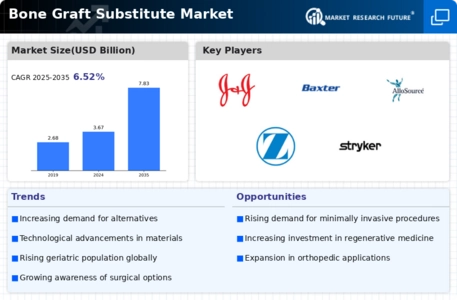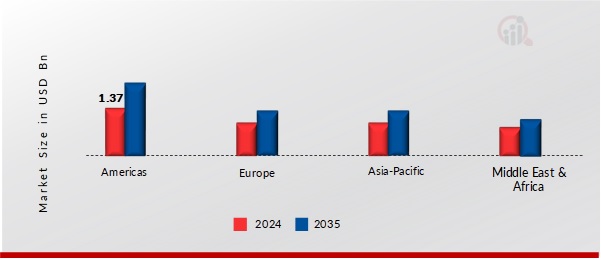Increasing Incidence of Bone Disorders
The rising prevalence of bone disorders, such as osteoporosis and osteoarthritis, is a primary driver for the Bone Graft Substitute Market. As populations age, the incidence of these conditions escalates, leading to a higher demand for effective treatment options. According to recent data, osteoporosis affects approximately 200 million individuals worldwide, necessitating surgical interventions that often require bone grafting. This trend is likely to continue, as the aging demographic is projected to grow significantly in the coming years. Consequently, the demand for bone graft substitutes, which facilitate healing and recovery, is expected to surge, thereby propelling the market forward. The increasing awareness of treatment options and advancements in surgical techniques further contribute to the growth of the Bone Graft Substitute Market.
Technological Innovations in Bone Grafting
Technological advancements in the field of bone grafting are transforming the Bone Graft Substitute Market. Innovations such as 3D printing, bioactive materials, and nanotechnology are enhancing the efficacy and safety of bone graft substitutes. For instance, 3D printing allows for the creation of customized grafts that match the patient's anatomy, improving surgical outcomes. Furthermore, the development of bioactive materials that promote bone regeneration is gaining traction, with market data indicating a potential growth rate of over 10% in this segment. These technological innovations not only improve patient outcomes but also expand the range of applications for bone graft substitutes, thereby driving market growth. As healthcare providers increasingly adopt these advanced solutions, the Bone Graft Substitute Market is poised for substantial expansion.
Growing Investment in Regenerative Medicine
The increasing investment in regenerative medicine is a notable driver for the Bone Graft Substitute Market. As research and development in this field expand, there is a growing focus on creating innovative solutions for bone repair and regeneration. Funding from both public and private sectors is being directed towards the development of advanced biomaterials and stem cell therapies that can enhance the effectiveness of bone graft substitutes. Market data indicates that the regenerative medicine sector is expected to witness a compound annual growth rate of over 8% in the next few years. This influx of investment not only accelerates the development of new products but also fosters collaboration between academic institutions and industry players, thereby propelling the Bone Graft Substitute Market forward.
Rising Preference for Minimally Invasive Surgeries
The growing preference for minimally invasive surgical procedures is significantly influencing the Bone Graft Substitute Market. Patients and healthcare providers alike are increasingly favoring techniques that reduce recovery time and minimize surgical trauma. Data suggests that minimally invasive surgeries can lead to shorter hospital stays and quicker rehabilitation, which is appealing to both patients and healthcare systems. As a result, the demand for bone graft substitutes that are compatible with these procedures is on the rise. This trend is expected to continue, as advancements in surgical techniques and tools further enhance the feasibility of minimally invasive approaches. Consequently, the Bone Graft Substitute Market is likely to experience growth driven by this shift towards less invasive surgical options.
Increasing Awareness and Acceptance of Bone Graft Substitutes
The rising awareness and acceptance of bone graft substitutes among healthcare professionals and patients is a crucial driver for the Bone Graft Substitute Market. Educational initiatives and marketing efforts have contributed to a better understanding of the benefits and applications of these substitutes. As more healthcare providers recognize the advantages of using bone graft substitutes over traditional methods, the adoption rates are likely to increase. Additionally, patient advocacy groups are playing a role in promoting awareness, leading to a more informed patient population that actively seeks out these treatment options. This growing acceptance is expected to translate into higher demand for bone graft substitutes, thereby positively impacting the Bone Graft Substitute Market in the foreseeable future.


















Leave a Comment